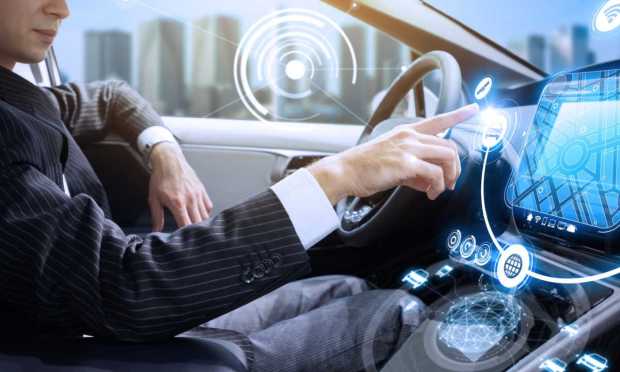Connected Car Fleets Become New B2B and B2C Revenue Drivers

As the number of connected vehicles on the road continues to grow, developers are producing tools that serve a variety of use cases for consumers, commercial drivers and fleet managers alike.
These innovations are driving a global automotive software market that one recent study said is expected to have a compound annual growth rate (CAGR) of 15% between now and 2030, as reported in the latest entry in the “B2B and Digital Payments Tracker®” series, “Reshaping Global Business With Connected Vehicles,” a PYMNTS and American Express collaboration.
“Connected cars will drive the transformation of global wireless data networks to more sophisticated personalized and experiences,” Tatia Adams Fox, vice president and general manager of the Travel and Entertainment National Client Group at American Express, told PYMNTS when interviewed for the report.
“They will also drive B2B and B2C businesses to aggressively invest in innovative connected vehicle technologies as well as market and consumer data that inevitably create new revenue streams,” Fox said.
Personalizing Vehicles for Consumers
As detailed in the report, consumers using connected cars will benefit from features like windshield screen text messages, news, weather updates and voice-activated commands to unlock doors and check fuel levels.
Consumers using vehicles owned by mobility services will find that they can order the vehicle they want and then adjust its settings to their preferred radio stations and climate control settings before even getting into the vehicle.
Alain Nana-Sinkam, senior vice president of business development at TrueCar, gave an example of that kind of personalization when interviewed for the report by PYMNTS.
“Here is Alain’s media that he likes to listen to, and we’re going to move the seat back because he’s a little taller, and he likes it to be 71 degrees — the vehicle itself becomes less important because you’re really just carrying your experience from vehicle to vehicle, and the technology is there to support that kind of thing,” Nana-Sinkam said.
Reducing Costs for Commercial Fleets
Connected vehicles deliver a range of benefits to commercial fleets as well — to the extent that a recent report found that about four in 10 connected fleet operators reported they got a return on investment (ROI) within six months and nine in 10 said they got their ROI within 12 months.
Among the top reasons businesses want connected vehicles are the vehicles’ ability to reduce costs, improve driver safety and behavior, and aid with vehicle security and locating vehicles.
For fleet operations with connected vehicles, a centralized dashboard can report on things like fleet operations and driver performance. Vehicle data can be used to provide insights into fuel usage, vehicle operation and preventative maintenance. Integrated video technology can improve driver training and behavior, reduce accidents and lower insurance premiums.
Serving a Multitude of Use Cases
To provide these and other benefits for commercial fleets and consumers, automakers and other developers are introducing more and more solutions.
For example, General Motors (GM) said in February that it expected to roll out 50 value-added products and services over the next 36 to 48 months.
Read more: Subscriptions to Connected Services in Vehicles May Add Up to $135 a Month
In addition, GM research found that consumers are willing to pay $135 a month for connected services during the lifetime of a vehicle.
“You can think of businesses like OnStar,” Steve Carlisle, executive vice president and president, North America at GM, said during a February tech conference, and “we have a multitude of other ones like that that we’re bringing to market that from a point of view of a life cycle purchase opens up a whole other stream of revenue and growth for us.”
For all PYMNTS B2B coverage, subscribe to the daily B2B Newsletter.
